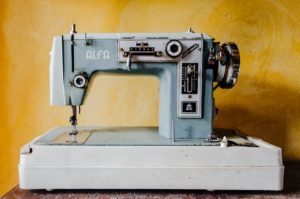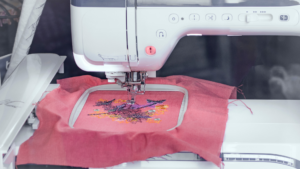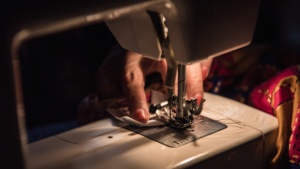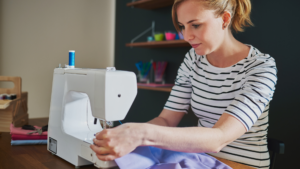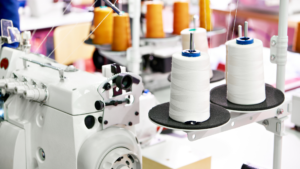Last Updated on August 2, 2021
If your sewing machine thread breaks, don’t worry. It’s a common problem for many sewers. What’s not normal is if your sewing machine thread keeps breaking.
Sewing machines use a lot of power so when the tension is too tight or loose, it can cause the sewing machine thread to break.
Sewing is not always easy – there are many things that could go wrong before, during, and after your project.
This guide will detail all the causes of this problem and provide solutions on how to fix them.
We’ll start by discussing some general things that you should know about sewing machine thread breaking before digging into details.
1. The Thread Might Not Be Installed Correctly
If the sewing machine thread is installed incorrectly, there’s a good chance that it will break.
Thread should be wound around a single spool or inserted into two registered needle holes in the sewing machine bobbin case and then pulled to tie an overhand knot at each end of the thread tail before cutting off any excess length.
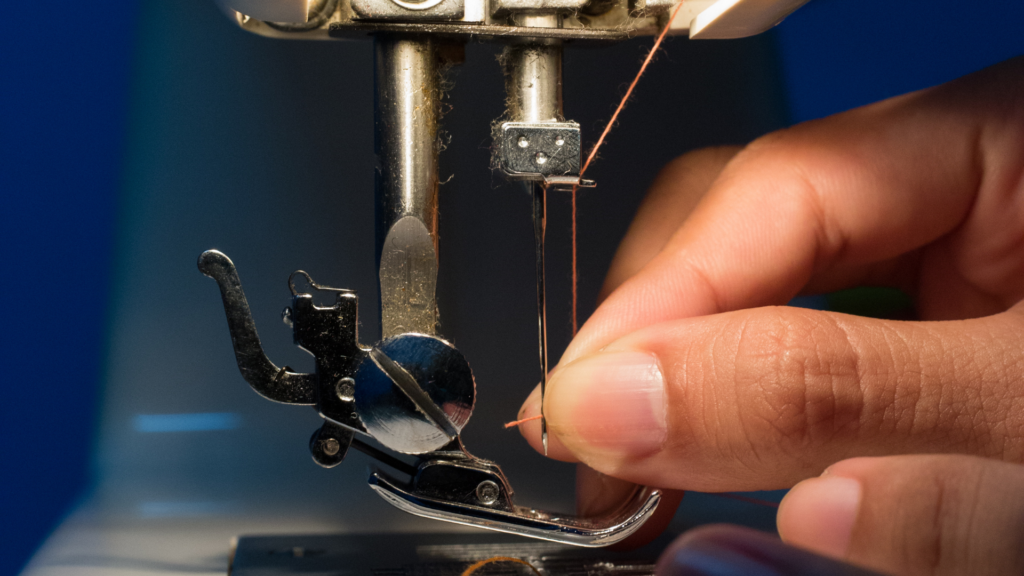
The tension on your sewing machine can also cause this problem as mentioned above so here are some tips for solving that issue:
Make sure you have enough pressure from your foot pedal (this will depend on what type of sewing style you use).
The more pressure there is, the tighter your stitches will be. This comes with practice though. For beginners, start out with light pressure because stitching tightly could lead to breaking threads if done incorrectly beforehand.
2. Thread Knots or Tangles
When sewing with thread, knots and tangles can be a common occurrence.
To fix this problem, simply cut the knot off before it gets too tight or tangled up in your machine. If you can ensure that there are no knots and tangles in the thread you’re using and the thread keeps breaking, it’s likely to be because of another problem.
3. The Upper Thread Tension Could Be Too Tight
Set the tension to the lowest level and then re-thread your machine.
The lower tension thread could be too tight, which is why it’s also wise to test this on a scrap piece of fabric first before sewing with any important project because if you make an error here, fixing it might take some time.
To fix this adjust the upper thread tension down just slightly from what was used for your last stitch or set it at one notch below that.
If there are ‘+’ signs next to the tensions you can increase them by turning the screw counter clockwise (left). To decrease them turn the screw in a clockwise direction (right).
Lowering or raising these tensions will affect how tightly your stitches are sewn. it’s advisable to set the tension to the best setting for your thread or less.
4. The Lower Thread Tension is not Correct
If you see the thread not rolling out of the bobbin smoothly, you need to adjust the tension on your bobbin case.
Start by turning it in a clockwise direction (right) until you see that the thread is spinning correctly and evenly around the bobbin shuttle. You can then turn back one notch if needed, but keep an eye out for any other problems with sewing machine or thread movement while you sew.
If this doesn’t fix it move onto step two below: Lowering/raising upper thread tensions. This will affect how tightly sewn stitches are so be sure to choose appropriate settings!
The lower thread tension may not be adjusted properly and needs adjustment up or down depending on what’s happening with your sewing machine needle thread ratio as well as what type of fabric you’re working on.
5. Sewing Machine Needles
There are two things you need to check when we’re talking about sewing machine needles being a factor to why the thread keeps breaking:
- Check if you’re using the correct needle size for your project
- Check if the needle itself is bent or broken
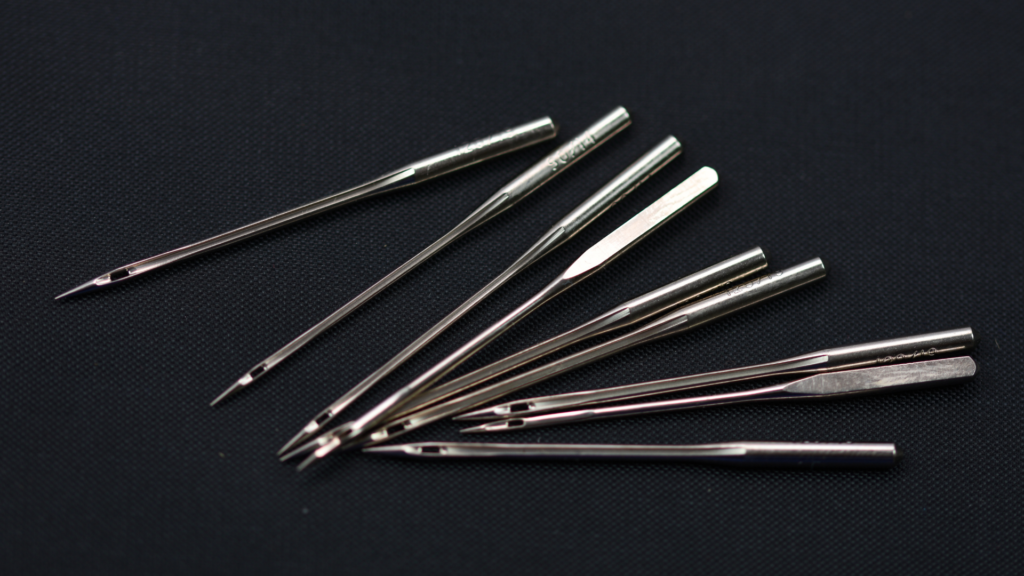
To fix this, simply replace the needle with a new one. If you’re using the incorrect needle size, make sure you use the right needle size for the fabric you’re working on.
6. Check the Bobbin
There are two things you need to check when we’re talking about the bobbin being a factor for why your sewing machine thread keeps breaking:
Check if the wrong type of tension is selected. If you set it too high or too low, this will cause your stitches to break and fray at the edges
Make sure that there’s no lint on top of or in between the threads.
To fix this, make sure you select the right type of tension and remove all lint from either above or below where your fabric is sewn together. Clean your sewing machine, or replace the bobbin if necessary.
7. Check the Throat Plate
The throat plate should be in the right position. If it’s not, this will cause your sewing machine thread to break and fray at the edges of your fabric
To fix this problem, just adjust the throat plate so that its aligned with where you’re sewing on top of or below.
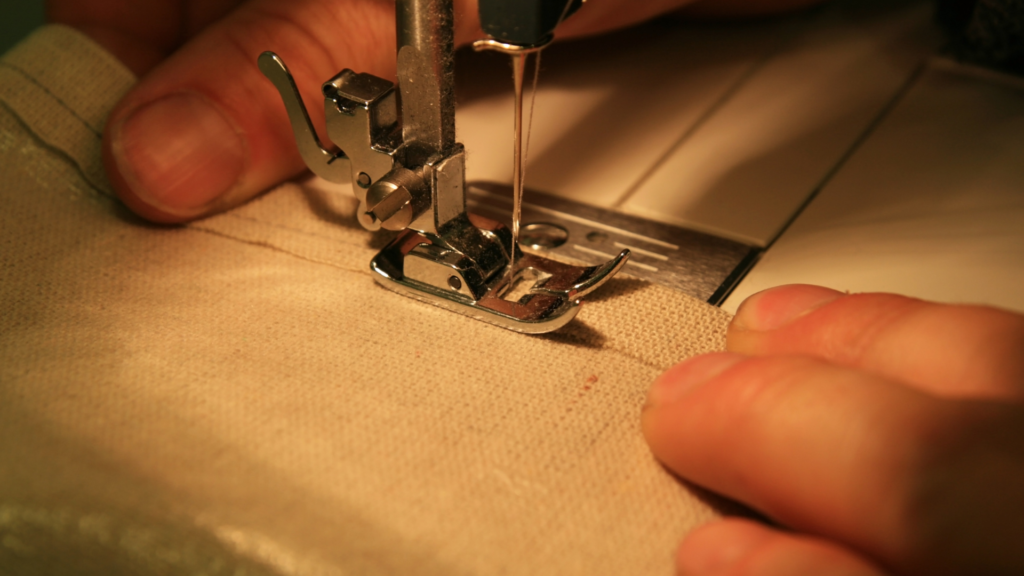
Also make sure that there is no lint obstructing any part of the stitching process near where you sew up close to a seam allowance or around one side edge of the needle hole on either side (bottom).
Clean off all lint if needed by using compressed air into each slot for dust/lint removal from underneath any metal parts like needles, bobbins, feed dogs etc.
8. Sewing Multiple Layers of Thick Material Together
This will be tricky, but it can be done. You’ll need to sew slowly and carefully in order to avoid breaking your sewing machine thread.
To prevent this problem from happening, make sure you’re using the correct type of needle for thick material like denim or leather (use a ballpoint needle).
For thicker materials, use a straight stitch that is as long as possible without getting too close to the edge of your fabric.
Be sure not to go over two millimeters away from the edge when sewing with thicker threads because this will cause the needles on most machines to break through both layers of fabric at once!
If you’ve followed these steps and still have problems with stitches coming undone after hours of painstaking work on large pieces of clothing, you might want to try sewing a seam in the opposite direction.
This will help keep your stitches from coming undone as you sew, but it might cause problems when trying to match up seams for sewing later on.
If all else fails and you can’t find any other solutions, try using embroidery thread or machine embroidery thread that is specifically made for thicker materials like denim or leather because they are stronger than the standard threads available at most fabric stores.
9. Re-thread Your Sewing Machine
Are you sure you threaded your machine properly?
If the thread keeps breaking, it can be worth it to re-thread your machine even if everything in it looks fine.

In some cases, the solution is as simple as re-threading the machine and fixing bobbin winding problems.
When you go to re-thread the top spool, for example, be sure to redo the bobbin too By doing this, it might be able to solve your thread breaking problem entirely.
10. The Spool Cap
You should also be sure to use the correct spool cap.
The wrong spool cap can cause sewing machine thread breakage, so make sure you are using one that is appropriate for your type of material or fabric and needle size.
In addition, make sure that you also installed the spool of thread correctly to avoid any further problems.
The spool must be placed on the thread holder in such a way that it can spin freely.
A too tightly wound spool might cause your sewing machine to jam.
In addition, make sure you have taken off all of the old thread and cotton from inside your machine before installing a new one
It’s important to clean out any residue left behind by an old or broken strand. This will help prevent more breakages later down the line.
This is because when we sew, our needle pushes the fabric through many layers at once; so if there is still some remaining thread wrapped around its shafts then it’s possible for these threads to catch on each other as they go round and create tugs which may affect the performance of your machine.

